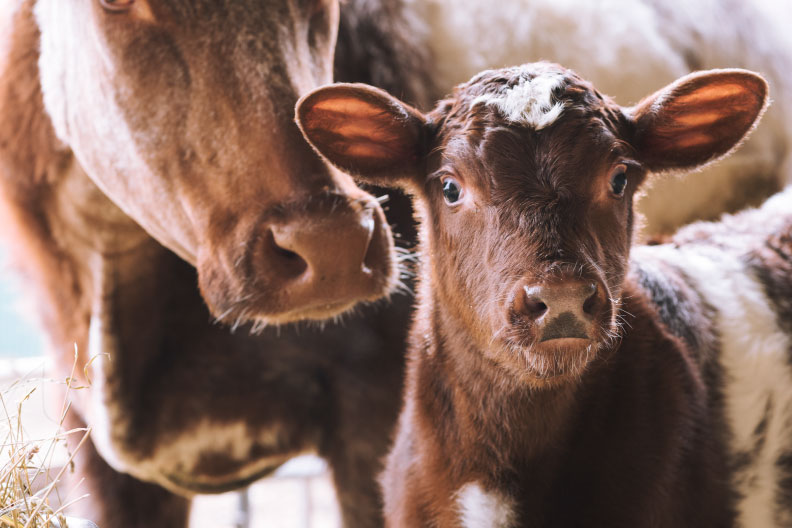By David Lamb, DVM, BSc.
Technical Beef Consultant
Hearing the term “calf scours” is enough to raise the stress level of any beef farmer, but actually experiencing an outbreak during calving causes a lot more problems than just stress. The economic impact of reduced weight gain, loss of life, treatment cost all hit the farms bottom line. Approximately 45% of all treatments given to calves before pasture turn-out are scour related and calves treated for scours on average weigh 24lbs less than herd mates who did not have scours.2 Calf scours are a perfect example of where an ounce of prevention is worth more than a pound of cure (literally and figuratively).
Calf scours, also known as neonatal calf diarrhea, is a broad term used to describe the clinical signs of a multifactorial disease complex. Scours are caused when fluid movement across the gut wall is interrupted and fluid is excreted out of the calf, resulting in dehydration. Bacteria, viruses, and protozoa are the causes of pathogenic scours. These pathogens are found on most farms, and can be very difficult and time consuming to treat.
It is often said that the best treatment for scours is prevention; this requires a two-pronged approach. The first step involves maximizing the calf’s acquired immunity, while the second method requires limiting exposure of the calf to the pathogen. Increasing immunity is achieved by providing sufficient high quality colostrum to the calf at birth and providing protection in the form of vaccines and high quality nutrition.
Colostrum production starts 6 weeks before calving; this is when the antibodies from the dam’s blood stream are moved into the udder, antibodies are then passed to the calf in the colostrum. Using a scour vaccine to raise the antibody levels in the dam for scour specific pathogens is an important part of protecting your herd. Using a vaccine that allows for the protection for the full duration of your calving season is critical. Talk with your veterinarian about your vaccine strategy.
Reducing exposure to pathogens is easier said than done, however the time and effort does pay great dividends in the end. This can be achieved by following these guidelines:
-
- Ensure calving pens are cleaned/bedded regularly, this includes a yearly complete clean out
- Separating/isolating any sick cow calf pairs from the herd – sick calves shed a very high number of pathogens
- For producers calving on pasture, moving your cows that have not calved to new ground every 5–7 days (Sandhills Calving System)
- Do not winter your cattle in the same place as they will calve
- Ensure calving areas are on higher ground if calving on pasture
If prevention has failed and you are experiencing calf scour problems, work with your veterinarian and nutritionist to develop intervention plans and treatment protocols. Replacing fluid loss is essential, and early and aggressive supportive treatment may be the difference between life and death in young calves.
- Gow, S.P. and C.L. Waldner. 2009. Prev Vet Med. 90: 55–65
- Wittum, T.E., M.D Salman, M.E. Kin, et al. 1994. Prev Vet Med. 19: 15–25
This article was written for the Winter 2018 Beef Grist. To read the whole Beef Grist, click the button below.

